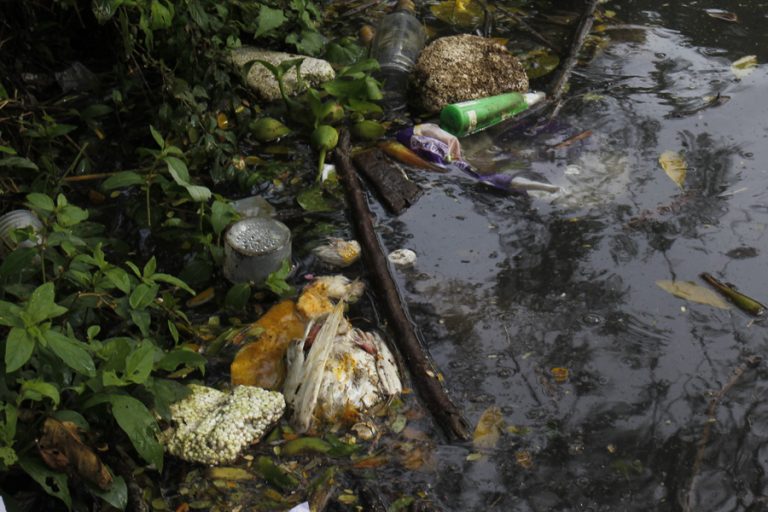Religious Rituals in Cuba without Animal Sacrifices
The movement has slowly garnered supporters on the Caribbean island and contributes towards the protection of the environment.

HAVANA TIMES – Some followers of Afro-Cuban religions agree that you can omit animal sacrifice from rituals, which is in line with the very origins of these animist religions and closely tied to Nature and its elements.
On August 9th, the issue was raised and discussed during the conference “Regla Olosa-Ifa without animal sacrifice” headed by babalawo (Ifa priest) Raufe Montalvan, a spokesperson for the movement that is slowly growing in this Caribbean country with 11.2 million inhabitants.
Sacrifice of will
The roundtable took place at the Casa Tomada Mirarte, an independent and community project in the capital’s Marianao municipality, whose objectives involve increasing the value of contributions made by the Afro-descendant population and deconstructing racist and discriminatory discourse which persists within society.
Before dozens of attendees, Montalvan explained that he began this process of modifying sacrifice rituals around 2009, when he began to ask himself many questions and reflect upon the points that he found contradictory and studying a great deal about the origins of religious practices.
He noted that these religions come from Africa, from tribes with a culture that was developed centuries before Christ, and were brought over to the Caribbean island by slaves between the 16th and 19th centuries, and have evolved with syncretic expressions.
“What was community-based in Africa, became personal here. It was impossible for everyone in the village to have a goat to offer their (orisha/deity) Eleggua, because there was only one in the entire place and everyone went there to pay tribute,” he pointed out.
He realized that the initiation ceremonies he had taken part in, when the time came for the sacrifice, the deity accepted another form of sacrifice, instead of using animal’s blood, he offered a juice or symbolic fruit to the orisha.
Montalven spoke out against practices which involve aggression to any species, such as banging nails and rails into royal palms and ceiba trees, or putting out sacrificed animals that then rot in the street, next to day-care centers, schools, institutions or homes, with the risk of diseases spreading and pollution that comes as a result.
“You can pick up a chicken, clean yourself and in doing so, you are no longer a rapist, thief, crook. Can a bath, external purification resolve my problem? he wondered, when talking about the “sacrifice of will” concept which he defends.
“The real sacrifice needs to be of one’s will because problems lie within one’s conscience, within oneself. Change needs to come from the inside. However, how willing are we to sacrifice our will?” he asked, leaving the audience to meditate upon this.

Debate
Several participants voiced their concerns and thoughts about the subject in today’s national context.
Gretel Montes de Oca, ballet dancer and animal rights activist, asked the extent to which the increase in Afro-Cuban religious practices influences, or not, the absence of an Animal Protection Act in Cuba, which citizens have been demanding for years.
According to the activist and poet Afibola Sinufola, blaming religions with African roots for the fact that the State doesn’t want to approve this Act, “forms part of the internalized racism that permeates every institution and the population on the whole.”
“It’s a lot easier to blame a religion which comes from Africa and justify it because many people say: how are you going to tell these “black people” that they can’t kill a goat?” she weighed in.
In researcher Ileana Hodge’s opinion, the problem lies in excessive animal sacrifices with the proliferation of santeria and the reasons why people want to be initiated.
“Another factor is animal welfare, there are many people who throw animals out on the street and they aren’t santeria priests necessarily. For example, there are people who have pets and they then drown or throw out their babies onto the street. It has more to do with educating society than with religion,” she argued.
She also pointed out that there is a more progressive line of thinking in some social groups as “we are becoming aware about Nature. Humans, not santeria priests, have put it in danger.”
Myrna Padron, the coordinator of Casa Tomada MirArte, stressed that “we are preparing activities so we can go into religious homes and places of worship and talk about these issues, to create a dialogue to raise awareness. Whether we sacrifice animals or not, being the best human beings we can be is the most important thing.”






Quite right Linda! The treatment of dogs – “mankind’s best friend” – in Cuba is a public disgrace. A very high percentage are condemned to wandering the streets seeking any form of nourishment, others spend their lives on the flat roof-tops and some tied to old oil drums in squalid urban backyards along with pigs, cockerels and horses. When Cuba promotes it’s so-called “Urban agriculture” to visiting do-gooder religious groups, it shows horticultural plots similar to the allotments of the UK, except that most production is confined to lettuce rather than other vegetables.
But the other form of “Urban agriculture” is that of the livestock I have described and it has far more significance economically than growing lettuce, for the pigs are the main source of pork for the populace. But the unsavoury conditions inevitably lead to an unpleasant stench drifting across residential areas. The poor dogs tied to those open-ended barrels, have no other shelter and frequently receive no exercise.
The consequences are that commencing at about midnight, a cockerel will crow and others will then respond around the neighbourhood, that leads to one of those poor curs barking, which again leads to a chorus of others. At about 6.00 a.m., a pig will start squealing in anticipation of being fed – inevitably followed by others.
Where are the regulations of animal health, the risks to human health, animal rights and food safety?
Non-existent!
But as you say those arm-chair supporters of the Castro regime will allocate responsibility to “el bloqueo”.
I could write a full article about this significant part of urban life in Cuba for it is never discussed, the preference being to ignore the reality of daily life for Cubans – even at times in HT.
With the amount of stray dogs wandering around Cuba, animal sacrifice would seem like a small issue.
There is certainly a need for animal protection laws in Cuba, but that is not confined to religious rites. The attitude towards dogs, cats, horses is in general deplorable and reflects the Catholic belief that animals have no soul. Such belief has nothing to do with Africa, but is a consequence of Spanish culture, for in Spain the torture of bulls by the insertion of massive darts in the neck muscles prior to being taunted by much admired matadors before eventual despatch to the cheers of the lusting Spanish audience. In Cuba, although contrary to the law, cock-fighting is a frequent event carefully ignored by the MININT goons. It suits the racism of Cuba to direct attention towards African based religions, rather than facing the reality of deliberate avoidance of introducing animal rights.